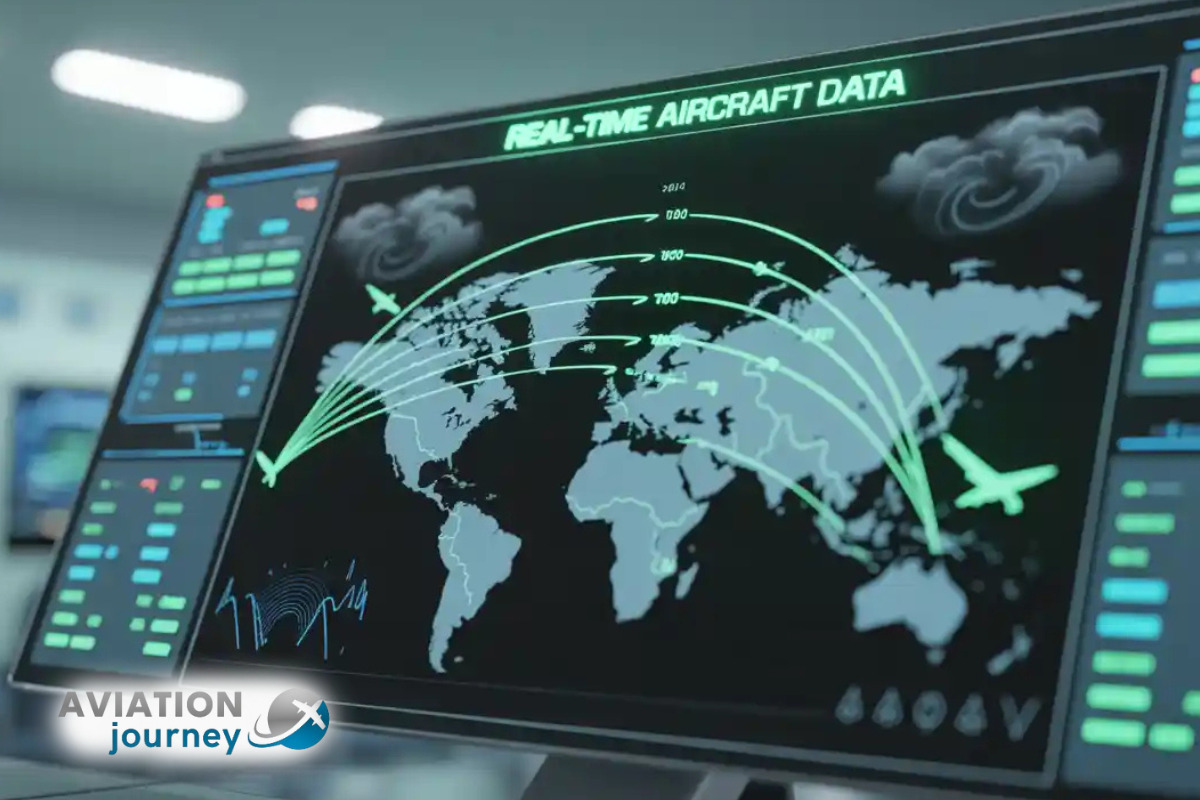Flight Vector Dashboard: A Powerful Game-Changer in Aviation
Aviation has seen incredible changes with the inclusion of sophisticated digital instruments such as the flight vector dashboard. This influential interface has a central role to play in contemporary cockpit systems, providing pilots with real-time visualization of data for making decisions. From commercial airlines to the military, a flight vector dashboard goes a long way in aviation efficiency, safety, and performance.
Understanding the Flight Vector Dashboard in Aviation
Flight vector dashboard is a digital display system indicating the plane‘s expected flight path given real-time navigation. Pilots interpret the direction, altitude, speed, and trajectory with respect to airspace around and planned flights using this interface. The flight vector dashboard is now more than just an instrument—it‘s a pillar of safety, efficiency, and pilot confidence. This digital revolution is shaping the way aircraft fly today’s intricate skies.
Role of Flight Vector Dashboards for Pilots
Pilots use flight vector dashboards to gain greater situational awareness, particularly during important phases of flight such as approach and descent. The system reduces complicated spatial information into a logical, easily readable visual presentation to enhance concentration.
Modules of a Flight Vector Dashboard
- Main Flight Display (MFD): Combines flight path vector, attitude, airspeed, and altitude on a single panel.
- Navigation Display (ND): Displays route maps, weather information, traffic warnings, and positional reports with the flight vector overlaid.
- Flight Director Symbol: Provides pitch and roll guidance cues within the path vector.
- Flight Management System Integration: Integrates flight planning, performance monitoring, and route optimization into live vector updates.
Advantages of Utilizing a Flight Vector Dashboard in Aviation
- Enhanced Flight Safety: Decreases pilot workload and reduces the chances of misinterpretation during high-stress situations.
- Predictive Path Guidance: It aids in trajectory correction due to wind, turbulence, or terrain difficulties.
- Error Mitigation: Supplies precise positioning to prevent deviation from allocated airspace corridors.
- Streamlined Training: Flight schools utilize this system to train student pilots in effective path tracking.
How the Flight Vector Dashboard Improves Cockpit Efficiency
- Minimizes data clutter by integrating trajectory and performance indicators in one streamlined display.
- Enhances cognitive concentration by showing where the plane will be in a few minutes or seconds.
- Delivers rapid visual alignment indications when making crosswind landings and correcting approach aligns.
- Updates path vectors automatically according to autopilot or manual control commands.
- Shows warnings or color vector change during possible conflict with terrain or restricted zones.
Uses of Flight Vector Dashboards in Contemporary Aircraft
Commercial, cargo, and private aircraft commonly use these dashboards for route planning and ATC command compliance. Business jets incorporate this technology to ensure accuracy at cruising speed. By consolidating key metrics into a single glanceable screen, such dashboards avoid the most common mistakes of altitude busts or track drifts. Furthermore, they warn pilots long before an aircraft strays from its planned flight trajectory.
Difference Between Classic Instruments and Flight Vector Dashboards
Traditional instruments made pilots synthesize data from various sources, whereas vector dashboards provide a simple combined display. This great difference improves the accuracy of real-time decision-making, particularly in poor weather or nighttime operations.
also see Airbus Sharklet Strobe LED Double Light Upgrade
Dashboards in Defense Aviation
Vector dashboards in defense aircraft enable combat maneuvering, air-to-ground targeting, and visualizing mission-critical flight data. Pilots remain aware even under high-G conditions and low-visibility combat environments.
ATC Coordination
- Permits immediate course adjustments consistent with Air Traffic Control orders without oral explanation.
- Increases situational awareness, particularly in heavy traffic airspace areas such as Class B or in the vicinity of busy airports.
- Shows TCAS inputs in coordinating adjustments to possible midair collisions.
Challenges in Implementing Flight Vector Dashboards
- Cost of Integration: Higher-end avionics updates require substantial investments of capital, particularly for older fleet backfits.
- Training Needs: Pilots changing over from analog systems must undergo in-depth type-rating and recurrent training.
- Software Intricacy: Misconfiguration or software malfunction may generate faulty vectors during high-stakes flight phases.
- Maintenance Downtime: Periodic diagnostic tests and recalibrations are paramount for sustained operational dependability.
- Human Factors Thought in Flight Vector Dashboards
- Pilots better interpret flight information when visuals are uncluttered, color-coded legibly, and unencumbered with extraneous icons. Dashboards today provide adaptive interfaces to mitigate cognitive overload.
Artificial Intelligence with Flight Vector Dashboards
Flight history–enabled AI dashboards are now able to use lessons from past flights to recommend best routes, altitude adjustments, or diversion policies. Predictive analytics improves flight vector accuracy for evolving weather or air traffic conditions.
Flight Vector Dashboards in Next Gen Airspace Management
These applications assist in modernizing air navigation systems under the FAA‘s Next Gen and SESAR European initiative. Vector dashboards enable accurate Required Navigation Performance (RNP) and Performance-Based Navigation (PBN) standards.
Data Security and Flight Vector Dashboards
Avionics need to be shielded from cyber threats that may contaminate flight path vectors or mislead pilots. Secure firmware protocols and encrypted communication are essential to ensure the system remains secure.
Flight Vector Dashboard Effect on Aviation Sustainability –
Optimized routing aided by vector dashboards contributes to fuel burn and CO₂ reduction in climb, cruise, and descent. Environmental performance indicators can be shown in conjunction with trajectory displays for environmentally friendly flying.
Future of Vector Dashboards in Aviation
Augmented reality overlays and haptic feedback may soon be part of flight vector dashboards with immersive feedback. Future advancements will continue to make cockpits more intuitive, automation-based.
FAQs
What is a flight vector dashboard in aviation?
A flight vector dashboard is a graphical display of the projected path of an airplane based on current navigation inputs.
Is a flight vector dashboard installed in every kind of aircraft?
Today’s modern jets, business planes, and even fighter jets utilize vector dashboards, although retrofitting existing models continues to be expensive.
Will flight vector dashboards function on occasion of bad weather?
Yes, they offer situational awareness in low visibility conditions with the help of synthetic vision and predictive path overlays.
Are flight vector dashboards secure from cyber attacks?
Most systems employ encrypted avionics protocols, yet cybersecurity is a continuously changing challenge in aviation software.
Conclusion
The flight vector dashboard is revolutionizing aviation from analog estimates to a digital precision system. It improves decision-making, encourages safety, and simplifies complicated air navigation. With advancements in technology, the dashboard will continue to be a key tool for commercial and military aviation operations.


